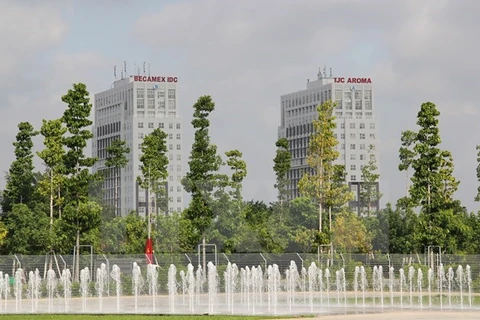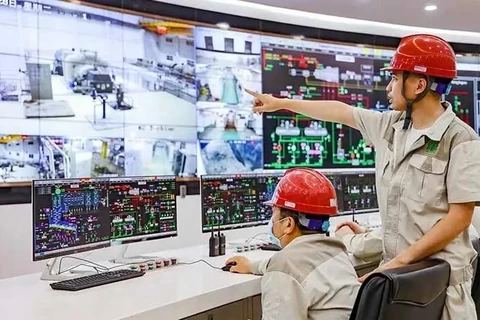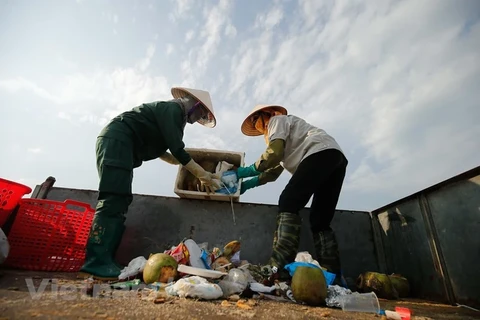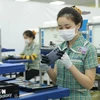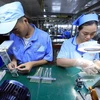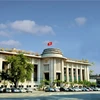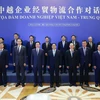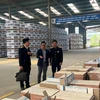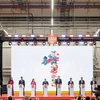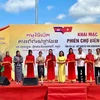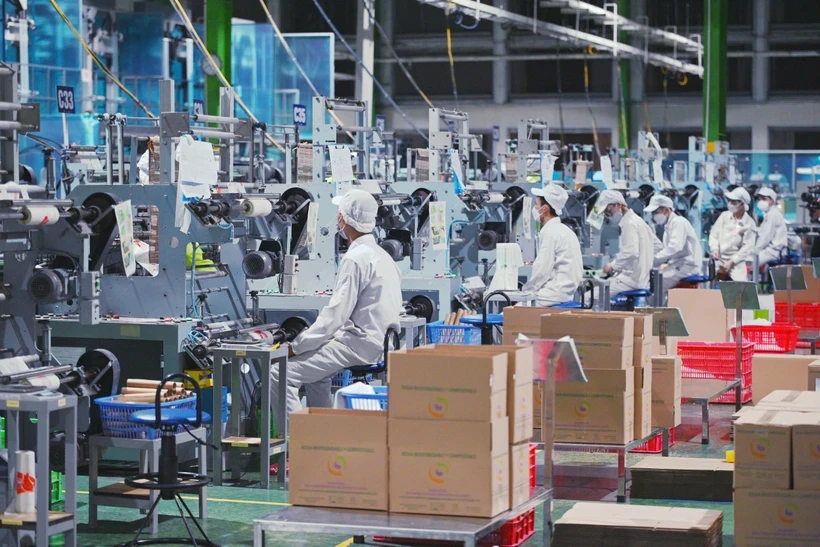
Hanoi (VNA) - Many localities and infrastructure developers identify the development of eco-industrial parks as an urgent need to create sustainable competitive advantages, said Vuong Thi Minh Hieu, Deputy General Director of the Department of Economic Zone Management under the Ministry of Planning and Investment.
According to Hieu, the model of export processing zones and industrial parks in Vietnam was born in 1991 on the basis of the Party's "Doi Moi" (Renewal) policy. Its aim was to open the doors, develop a multi-sector commodity economy, and attract resources from economic sectors for the country’s socioeconomic development.
By the end of July 2024, the country had 431 industrial parks and export processing zones established with a total area of about 132,300 hectares and an industrial land fund of about 89,900 hectares. Of these, 301 have come into operation and attracted a large amount of investment, supplementing important resources for investment in socioeconomic development of the country as well as localities.
She stated that the transformation of industrial zones towards sustainability in Vietnam aligns with global development trends. Industrial zone models are based on advanced management, digital transformation, application of science and technology, collaboration, and industrial symbiosis to effectively use materials, energy, and resources. They share common services and promote a "one-stop, on-site" mechanism to minimize administrative procedures for businesses and investors, she added.
Internationally, the ecological industrial zone model aims at sustainable development and has been implemented since the 1990s. This involves adopting solutions for efficient use of energy and resources and cleaner production, associated with industrial symbiosis networks. The goal is to transition traditional industrial zones to eco-industrial ones, thereby providing practical economic, environmental, and social benefits to businesses and industrial parks.
According to Hieu, in Vietnam, the ecological industrial zone initiative was piloted in the northern province of Ninh Binh, the central city of Da Nang, and Can Tho city in the Mekong Delta in the 2015-2019 period. This was a joint effort by the Ministry of Planning and Investment (MPI) and the United Nations Industrial Development Organization (UNIDO), funded by the Swiss State Secretariat for Economic Affairs (SECO), the Global Environment Facility (GEF), and the United Nations Development Programme (UNDP).
After more than four years of implementation, the pilot industrial zones, namely Khanh Phu and Gian Khau in Ninh Binh, Hoa Khanh in Da Nang, and Tra Noc 1 & 2 in Can Tho, have adopted effective resource use and cleaner production solutions. The efforts have helped 72 businesses save over 22,000 MWh of electricity, 600,000 cu.m of water, and nearly 3,600 tonnes of chemicals worth over 76 billion VND (3.06 million USD) per year. Site refurbishment has helped to cut down CO2 emissions by 32,000 tonnes per year. More than 207 billion VND has been mobilised from the private sector to implement solutions that reduce energy, water and chemical consumption.
From 2020 to 2024, with financial support from the Swiss Government, the MPI has continued to collaborate with UNIDO to expand the model to three additional locations: Hai Phong, Dong Nai, and Ho Chi Minh City. This move has achieved highly encouraging results.
As of the end of May 2024, the ministry and UNIDO have supported 90 enterprises with 889 Resource Efficiency and Cleaner Production (RECP) solutions across four industrial zones namely Hiep Phuoc (HCM City), Amata (Dong Nai), Dinh Vu (Hai Phong), and Hoa Khanh (Da Nang). Among these solutions, 429 have been implemented, contributing to saving energy and water, reducing CO2 emissions, and bringing economic benefits to businesses. Additionally, 62 industrial symbiosis opportunities have been proposed for Hiep Phuoc, Amata and Dinh Vu IPs, with 18 cases showing high feasibility. These efforts have helped optimise waste reuse and formalize the implementation of a circular economy.
Hieu said that the MPI is collaborating with the World Bank to support the development of an ecological industrial zone in the southern province of Binh Duong. The project includes implementing circular water networks in several industrial zones focusing on textile activities in Hung Yen and Thua Thien-Hue provinces, and promoting energy efficiency to establish ecological industrial zones following the Korean model.
The ministry is also expanding its cooperation with the European Union (EU) Delegation, the Dutch Sustainable Trade Initiative (IDH), and other organisations to support businesses in industrial zones in implementing circular economy practices in production. The will help the partners meet the sustainable development requirements to participate in the global value chain, she added.

Hieu held that ecological industrial zones are increasingly becoming a criterion for foreign direct investment (FDI) investors. Therefore, many localities and industrial infrastructure investors view the development of ecological industrial zones as a necessary and urgent step to create sustainable competitive advantages.
These zones will significantly contribute to efforts to combat climate change, mobilize private sector resources for green industrial solutions, ensure energy security, and demonstrate the Government's political commitment to sustainable development, she noted./.
